The Jerezana bottle
Until the early 1870s, sherry was commonly sold in bulk, especially in barrels that were transported to bars and shops where people could drink it directly or take it home in their own container (this echoes in what tabancos are doing today). Richer people simply bought a whole barrel of sherry (usually a smaller quarter cask) to store in their cellar.
History of bottled sherry
One of the earliest mentions of bottled sherry comes from Manuel María González Ángel, the founder of González Byass, who shipped bottles of wine to the Philippines and Latin America as early as 1839. Although the practice was probably a bit older, he was one of the pioneers and it was not until the last decades of the 19th Century that bottled sherry is common among the majority of bodegas.
Although the transportation of sherry in bulk is more cost-efficient, selling bottled sherry had some important advantages. In general it maintained a higher quality during transport and it allowed producers to control and distinguish their brands through label designs. It was also seen as an important measure against imitations and fraude after the sherry boom of the mid 1800s.
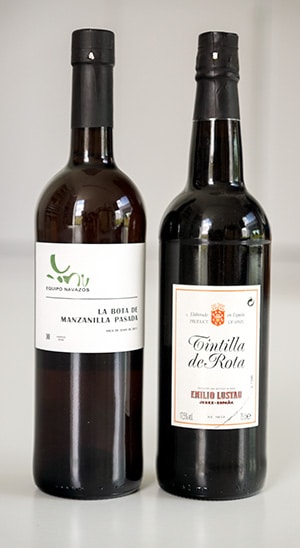
It should be noted that sherry in bulk has always remained popular for export. Even in the 1970’s around 90% of all exported sherry was transported in casks or tanks which were then bottled by importers and local distributors, often under their own brands. Nowadays sherry needs to be bottled within the Jerez-Xérès-Sherry region by law.
The Jerezana bottle
The sherry region developed its own typical type of bottle, which is known as the botella Jerezana, the Jerezian bottle. In its current-day form, this bottle is similar to the classic, cilindrical Bordeaux bottle but it has straighter shoulders and a longer, more pronounced neck. It also shows two subtle notches (above and below the label) and it is commonly made from dark glass to protect the contents from sunlight.
Right picture: a modern-day Jerezana bottle from Emilio Lustau next to a classic Bordeaux-style bottle as used by Equipo Navazos for most of their sherries.
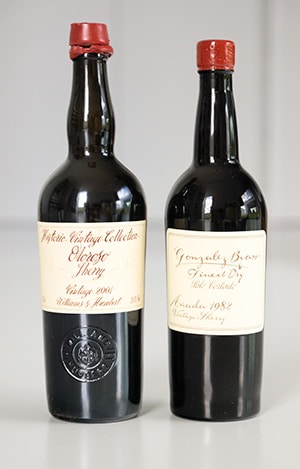
Left picture: two vintage sherries in bottles that were inspired by mid 19th century examples.
The Jerezana bottle was supposedly introduced in the 1870s and had become the most popular style of bottle around 1900. Until then, the choice of bottle was very much ad hoc and all kinds of bottles were used: the traditional Bordeaux bottle, wider and lower ‘dumpy’ bottles and some Rhine-style bottles that are more slender and without shoulders.
Standardizing the type of bottle helped sherry to distinguish itself from other wine regions in the world and strengthen its identity. Nowadays some bodegas are trying to stand out again by finding new unique styles (think of the Romate Special Reserves or Old & Plus sherries), but the classic Jerezana bottle is still an iconic element in the rich history of Jerez.


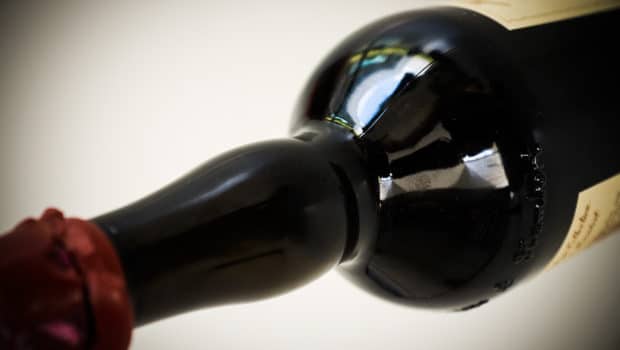
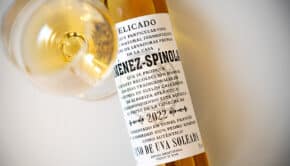


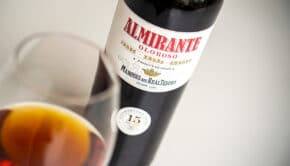





2 Responses to The Jerezana bottle